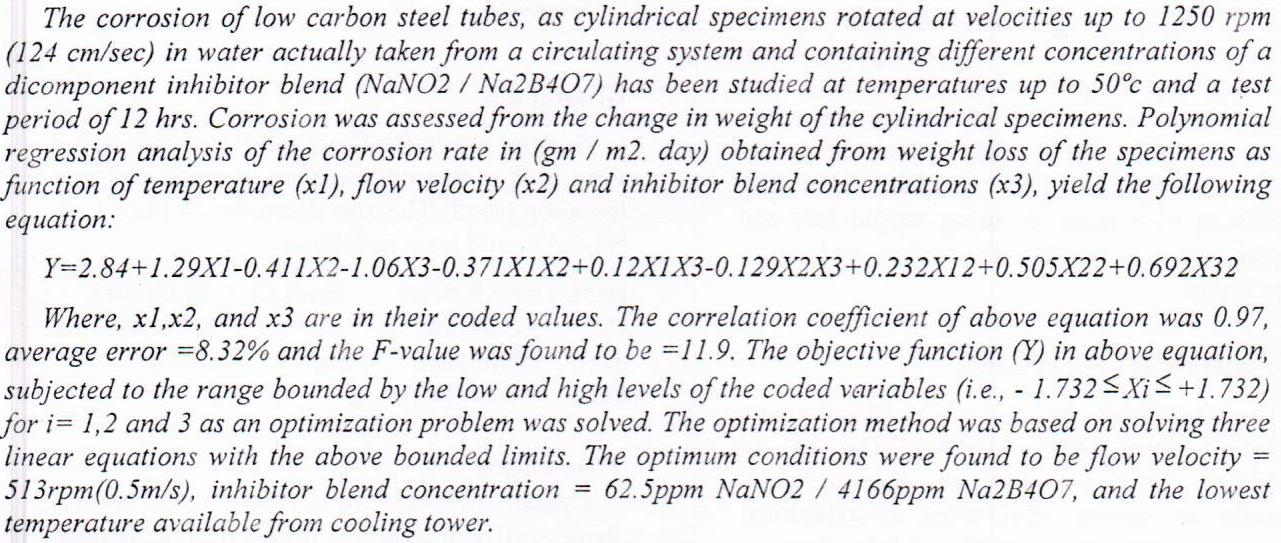
Objective: The present study investigates whether the exposure to low-power diode laser induces denaturation in red blood cell (RBC) membrane protein composition, and determines the irradiation time for when denaturation of membrane protein process begins. Background: A low-energy laser has been used extensively in medical applications. Several studies indicated significant positive effects of laser therapy on biological systems. In contrast, other studies reported that laser induced unwanted changes in cell structure and biological systems. The present work studied the effect of irradiation time of low-power diode laser on the structure of membrane proteins of human RBCs. Materials and methods: The RBC suspension was divided into five equa
... Show More (5)
(5)
In this paper, construction microwaves induced plasma jet(MIPJ) system. This system was used to produce a non-thermal plasma jet at atmospheric pressure, at standard frequency of 2.45 GHz and microwave power of 800 W. The working gas Argon (Ar) was supplied to flow through the torch with adjustable flow rate by using flow meter, to diagnose microwave plasma optical emission spectroscopy(OES) was used to measure the important plasma parameters such as electron temperature (Te), residence time (Rt), plasma frequency (?pe), collisional skin depth (?), plasma conductivity (?dc), Debye length(?D). Also, the density of the plasma electron is calculated with the use of Stark broadened profiles
 (19)
(19)
 (8)
(8)
The aim of this work is to evaluate some mechanical and physical
properties (i.e. the impact strength, hardness, flexural strength,
thermal conductivity and diffusion coefficient) of
(epoxy/polyurethane) blend reinforced with nano silica powder (2%
wt.). Hand lay-up technique was used to manufacture the composite
and a magnetic stirrer for blending the components. Results showed
that water had affected the bending flexural strength and hardness,
while impact strength increased and thermal conductivity decreased.
In addition to the above mentioned tests, the diffusion coefficient
was calculated using Fick’s 2nd law.
 (2)
(2)
Fuzzy logic is used to solve the load flow and contingency analysis problems, so decreasing computing time and its the best selection instead of the traditional methods. The proposed method is very accurate with outstanding computation time, which made the fuzzy load flow (FLF) suitable for real time application for small- as well as large-scale power systems. In addition that, the FLF efficiently able to solve load flow problem of ill-conditioned power systems and contingency analysis. The FLF method using Gaussian membership function requires less number of iterations and less computing time than that required in the FLF method using triangular membership function. Using sparsity technique for the input Ybus sparse matrix data gi
... Show MoreA mathematical model constructed to study the combined effects of the concentration and the thermodiffusion on the nanoparticles of a Jeffrey fluid with a magnetic field effect the process of containing waves in a three-dimensional rectangular porous medium canal. Using the HPM to solve the nonlinear and coupled partial differential equations. Numerical results were obtained for temperature distribution, nanoparticles concentration, velocity, pressure rise, pressure gradient, friction force and stream function. Through the graphs, it was found that the velocity of fluid rises with the increase of a mean rate of volume flow and a magnetic parameter, while the velocity goes down with the increasing a Darcy number and lateral walls. Also, t
... Show More (3)
(3)
 (18)
(18)
 (15)
(15)
Thrust blocks and restraint joints are the two most popular methods of counteracting the thrust force that generated at pipe fittings (bends, Tee, wye, reducers, dead ends, etc…). Both systems perform the same function, which is to prevent the joints from separating from the pipes. The aim of the study is to review previous studies and scientific theories related to the study and design of thrust blocks and restraint joints to study the behavior of both systems under thrust force and to study the factors and variables that affect the behavior of these systems. The behavior of both systems must be studied because they cannot be abandoned, as each system has conditions whose use is more feasible, scientific, and economic
... Show More (3)
(3)
In this study, method for experimentally determining the electron density (ne) and the electron temperature (Te) in the atmospheric Argon plasma jet is used; it is based on optical emission spectroscopy (OES). Boltzmann plot method used to calculate these parameters measured for different values of gas flow rate. The results show that the electron temperature decreasing with the increase of gas flow rate also indicates an increasing in the electron density of plasma jet with increasing of gas flow rate.
 (3)
(3)
